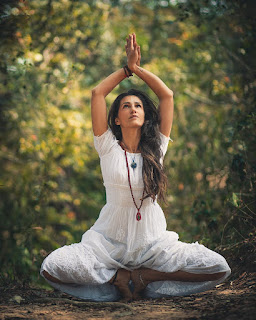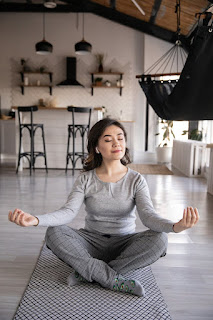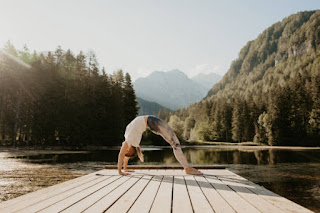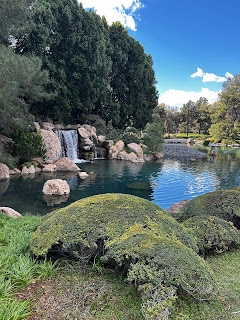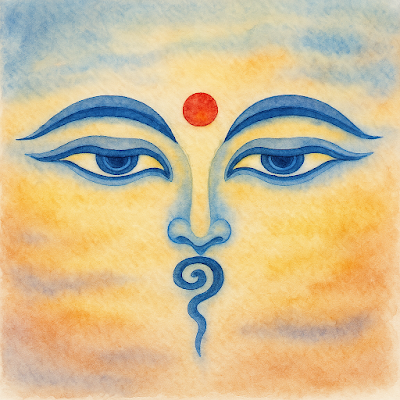Beginner’s Guide to Yoga: Styles, Gear, and Starting Tips
Embarking on a yoga journey marks the beginning of a transformative adventure that not only harmonizes the body and mind but also invites a sense of peace and well-being into your life. The practice of yoga, with its roots deeply embedded in ancient Indian philosophy, extends beyond mere physical postures; it encompasses a holistic approach to living. Yoga’s rich history dates back over 5,000 years, evolving through time to cater to the needs of different practitioners while maintaining its core essence of unity and mindfulness.
The benefits of yoga are manifold and well-documented, ranging from improved flexibility and strength to enhanced mental clarity and stress reduction. Whether you seek physical healing, mental tranquility, or spiritual awakening, yoga offers a path tailored to your individual needs. This guide aims to serve as your compass on the yoga path, providing essential insights into selecting the right style of yoga, understanding the gear you’ll need, setting realistic goals, and finding the right teacher or class. With each step tailored to beginners, we aspire to make your initiation into yoga as seamless and rewarding as possible.

Choosing the Right Style of Yoga for You
In the vast and vibrant world of yoga, each style unfolds like a unique blossom, offering distinct paths to wellness and self-discovery. Your journey into yoga is deeply personal, and finding the style that resonates with your individual needs and aspirations is key to nurturing a fulfilling practice. Let’s explore the essence, focus, and benefits of various yoga styles to guide you in choosing the path that calls to your spirit.
Hatha Yoga: Known as the all-encompassing foundation of yoga practices, Hatha Yoga is where the journey begins for many. This style focuses on physical postures (asanas) and breathing techniques (pranayama), introducing the basic elements of yoga in a serene, supportive pace. The purpose of Hatha Yoga is to bridge the body and mind through steady practice, aiming for balance and alignment.
Benefits: Enhances flexibility, promotes relaxation, and builds a solid foundation for a yoga practice, making it ideal for beginners and those who prefer a gentle approach.
Vinyasa Yoga: Vinyasa stands out for its fluid, dynamic nature—a dance of motion and breath where movements are seamlessly woven together. The focus is on the synchronization of breath with a progressive series of postures, cultivating a meditative flow that heats the body and sharpens the mind.
Benefits: Improves cardiovascular health, increases stamina, and enhances mental focus. Vinyasa’s rhythmic nature makes it appealing for those who seek movement and transformation within their practice.
Iyengar Yoga: Precision and alignment are the hallmarks of Iyengar Yoga, where each posture is practiced with meticulous attention to detail. This method employs props to aid in achieving the correct alignment, making it accessible and adaptable to all. The purpose is to deepen the understanding of each asana through prolonged holds and to explore the subtleties of body alignment.
Benefits: Enhances body awareness, improves posture and flexibility, and is particularly beneficial for those recovering from injuries or dealing with chronic conditions.
Ashtanga Yoga: Ashtanga is characterized by its intensity and discipline, following a fixed sequence of postures practiced in a specific order. This style demands dedication and perseverance, leading practitioners through a vigorous physical journey. The focus is on building strength, flexibility, and endurance.
Benefits: Builds a strong, toned body, enhances mental resilience, and fosters a sense of discipline and commitment.
Yin Yoga: In contrast to the dynamic practices, Yin Yoga invites stillness and introspection. Postures are held for several minutes, targeting the connective tissues, such as ligaments and fascia. The purpose is to cultivate a deeper inward focus, allowing for emotional and physical release.
Benefits: Promotes flexibility, encourages a meditative state of mind, and offers deep relaxation and stress relief.
Restorative Yoga: The ultimate in relaxation and stress relief, Restorative Yoga uses props to support the body in poses that are held for extended periods. This style focuses on relaxation and rejuvenation, gently stretching and opening the body without exertion.
Benefits: Reduces stress and anxiety, improves sleep quality, and enhances overall well-being, making it perfect for those seeking solace and recuperation.
In the garden of yoga, each style offers a unique bouquet of benefits, designed to cater to different needs, preferences, and stages of life. Whether you’re drawn to the physical challenge of Ashtanga, the serenity of Yin, or the balanced foundation of Hatha, your perfect yoga path awaits. Embrace the journey with an open heart, and let the transformative power of yoga guide you to your truest self.
Essential Yoga Gear for Beginners
Embarking on your yoga journey is an exciting venture into self-discovery and wellness. As you prepare to dive into the practice, equipping yourself with the right gear can enhance your experience, ensuring comfort, safety, and enjoyment. Let’s explore the essential yoga gear that will support your journey from the outset.
Yoga Mat: The cornerstone of any yogi’s gear, a yoga mat, provides a personal space for your practice, along with cushioning and grip. When choosing a mat, consider thickness for comfort, material for sustainability, and texture for traction. A well-chosen mat becomes a trusted companion on your path to wellness.
Yoga Blocks: Especially helpful for beginners, yoga blocks assist in deepening stretches, improving alignment, and making certain poses more accessible. They act as an extension of your arms, offering support and stability as you explore new postures.
Yoga Strap: A yoga strap can aid in reaching limbs in challenging poses, enhancing flexibility, and maintaining proper alignment. It’s a simple tool that greatly benefits both new and experienced practitioners, particularly in stretching the legs, shoulders, and back.
Comfortable Clothing: Yoga clothes should offer freedom of movement and comfort. Opt for breathable, stretchable fabrics that wick away moisture. Fitted clothing is preferable as it stays in place during poses and allows you and your instructor to monitor your alignment.
Yoga Bolster: For those practicing Yin or Restorative Yoga, a bolster can be invaluable. It supports the body during deep relaxation, meditation, and certain poses, facilitating a deeper sense of release and comfort.
Meditation Cushion: While not strictly necessary, a meditation cushion can enhance your practice by providing comfortable seating for meditation and pranayama (breath work). This can help maintain a proper posture and focus during these practices.
Equipping yourself with these essentials can significantly enrich your yoga practice, making it more enjoyable and effective. Remember, yoga is a personal journey, and the gear you choose should support and reflect your individual needs and preferences. When I started first was exposed to yoga was on my family’s Wii fit board, at the end of the day you only need the will to be equipped to start on your yoga journey!
Setting Realistic Goals and Expectations
Embarking on your yoga journey is an adventure filled with discovery and growth. As with any new endeavor, setting realistic goals and expectations is crucial for a fulfilling and sustainable practice. This segment is dedicated to guiding you through the process of establishing attainable objectives, helping you to stay motivated and enjoy each step of your yoga path.
1. Start with Clarity: Begin by defining clear, achievable goals. Whether it’s improving flexibility, enhancing mental well-being, or finding a moment of peace in your day, understanding what you wish to achieve sets a purposeful direction for your practice.
2. Embrace Progress Over Perfection: Yoga is not about achieving the perfect pose but rather about the journey and what you learn along the way. Celebrate small victories and progress, recognizing that every step forward is a step towards your goal.
3. Set a Regular Practice Schedule: Consistency is key in yoga. Aim to practice regularly, but be realistic about what’s feasible for your lifestyle. Whether it’s daily, a few times a week, or even once a week, a consistent schedule helps to build a habit and see gradual improvements.
4. Listen to Your Body: Every body is unique, and what works for one person may not work for another. Pay attention to how your body and mind feel during and after practice, and adjust accordingly. Remember, yoga is a personal journey, and tuning into your body’s needs is part of the process.
5. Be Patient and Kind to Yourself: Progress in yoga can be slow and non-linear. There will be days of advancement and possibly days of setbacks. Practicing patience and self-compassion during these times is vital. Yoga is a lifelong journey, not a race to the finish line.
6. Seek Support When Needed: Whether it’s through classes, online communities, or books, seeking support and guidance from experienced practitioners can provide valuable insights and encouragement. Remember, you’re not alone on this journey.
Setting realistic goals and maintaining a positive, patient mindset are essential for a rewarding yoga practice. By acknowledging your achievements, no matter how small, and enjoying the process, your yoga journey will be filled with joy, learning, and personal growth.
Finding a Yoga Teacher or Class
Discovering the right yoga teacher or class can significantly influence your yoga journey, providing direction, inspiration, and a deeper understanding of the practice. Whether you’re leaning towards online classes or prefer the in-person experience, here are some tips to guide you in finding the perfect fit for your yoga education.
1. Determine Your Preferences: Reflect on what you value in a yoga class. Do you prefer a slow, meditative style or a more dynamic, physically challenging class? Would you thrive in a large group setting, or do you seek the intimacy of small classes or private lessons?
2. Research and Explore: Take advantage of the wealth of online resources to research potential classes and teachers. Many studios and instructors offer online sessions, introductory videos, and trial classes, allowing you to get a feel for their teaching style and philosophy.
3. Consider the Qualifications and Experience: Look for teachers who have completed reputable training programs and possess certification from recognized yoga associations. Experienced teachers are likely to offer deeper insights and safely guide you through your practice.
4. Check Reviews and Recommendations: Word of mouth and reviews can be incredibly helpful in finding a great yoga class. Ask friends, family, or online communities for recommendations. People’s experiences can offer valuable insights into what you might expect from a class or teacher.
5. Online vs. In-person Classes: Online classes offer flexibility and convenience, especially if you have a busy schedule or lack access to local studios. In-person classes, on the other hand, provide a sense of community and direct feedback from the instructor. Consider what aligns best with your learning style and personal circumstances.
6. Try Before You Commit: Many studios and online platforms offer trial classes or introductory offers. Take advantage of these opportunities to explore different styles, teachers, and class formats. This hands-on experience is invaluable in finding the class that feels right for you.
7. Listen to Your Instincts: Ultimately, the right teacher or class should feel welcoming and inspire you to grow in your practice. Trust your intuition—if a class or teacher feels right, it probably is.
Finding a yoga teacher or class that resonates with you is a crucial step in your yoga journey. It can transform your practice, providing you with the guidance, motivation, and community to explore and deepen your yoga experience.
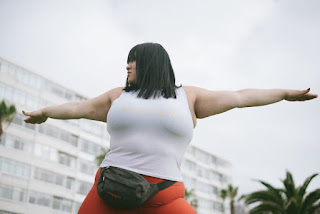
Conclusion
As we draw the curtains on “The Beginner’s Guide to Starting Your Yoga Journey,” it’s essential to remember that yoga is more than just a physical practice—it’s a journey of self-discovery, healing, and profound transformation. Embarking on this path requires patience, dedication, and an open heart, but the rewards are immeasurable. Through yoga, you can achieve a harmonious balance between mind, body, and spirit, cultivating a sense of peace and well-being that transcends the mat.
As you begin this journey, embrace each moment with curiosity and compassion. The world of yoga is vast and varied, offering a rich tapestry of experiences and insights. Whether you’re in the quietude of a meditative pose or the strength of an asana, yoga offers a sanctuary for growth and self-reflection.
Remember, your yoga journey is uniquely yours. It’s not about perfection or comparison but about finding your path and honoring your pace. As you explore different styles, gear, and classes, keep your goals and intentions at the forefront of your practice. Let them guide you, but also be open to the unexpected lessons and joys that yoga will undoubtedly bring into your life.
